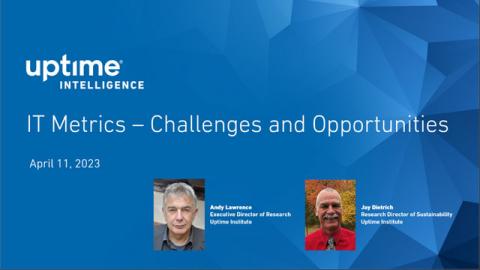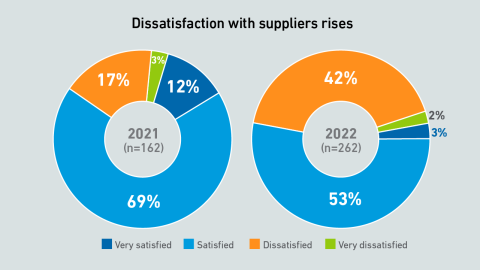The public cloud’s on-demand pricing model is vital in enabling application scalability — the key benefit of cloud computing. Resources need to be readily available for a cloud application to scale when required without the customer having to give…
filters
Explore All Topics
To help address the growing scrutiny of digital infrastructure efficiency, this webinar explores some of the options available to communicate IT system efficiency and work delivered per unit of energy consumed.
Operators report that their sustainability initiatives not only benefit the environment — they also reduce operating costs and improve customer engagement. Sustainability strategies, however, vary widely.
This Q&A brings together contributor/member questions and expert answers from a series of Uptime webinars held on the topic of sustainability and regulations and reporting in 2022.
There is evidence that outage rates have been gradually falling in recent years. This report brings together and analyzes recent Uptime Institute data on IT and data center outage trends: their causes, costs and consequences.
Hyperscale cloud providers have opened numerous operating regions in all corners of the world over the past decade. The three most prominent — Amazon Web Services (AWS), Google Cloud and Microsoft Azure — now have 105 distinct regions (excluding…
Uptime Intelligence finds that operators and vendors face major delays in the supply of equipment, and are increasingly dissatisfied with their suppliers.
The past decade has seen numerous reports of so-called cloud “repatriations” — the migration of applications back to on-premises venues following negative experiences with, or unsuccessful migrations to, the public cloud.A recent Uptime Update (High…
Data center capacities continued to grow for colocation and enterprise facilities throughout 2022. Operators appear to be more aware of costs as they look to increase server power densities and reduce energy use.
Big public-cloud operators have often had to compete against each other — sometimes ferociously. Only rarely have they had to compete against alternative platforms for corporate IT, however. More often than not, chief information officers (CIOs)…
Up until two years ago, the cost of building and operating data centers had been falling reasonably steeply. While labor costs have risen during this time, better management, processes and automation have helped to prevent spiraling wage bills.
A host of regulations worldwide have introduced (or will introduce) legal mandates forcing data center operators to report specific operational data and metrics. Key examples include the European Union’s Corporate Sustainability Reporting Directive …
Unexpected costs are driving some data-heavy and legacy applications back from public-cloud to on-premises locations. However, very few organizations are moving away from the public cloud strategically — let alone altogether.The past decade has seen…
Prolonged supply chain difficulties, high energy prices, and sweeping sustainability mandates — the digital infrastructure sector had its plate full in a tumultuous 2022. But new uncertainties abound that add more risk to operations and business…
European Union (EU) regulators wrapped up 2022 with new legislation introducing stricter requirements for data center operators. Four major regulations were passed (with strong majorities) in the European Parliament — most of these having been…
 Owen Rogers
Owen Rogers

 Andy Lawrence
Andy Lawrence
 Jay Dietrich
Jay Dietrich

 Douglas Donnellan
Douglas Donnellan


 Lenny Simon
Lenny Simon






 Max Smolaks
Max Smolaks
 Daniel Bizo
Daniel Bizo
 Jacqueline Davis
Jacqueline Davis
